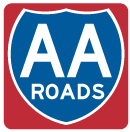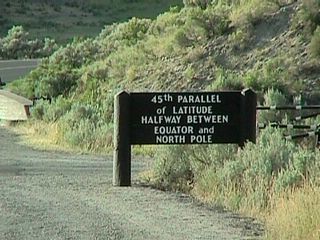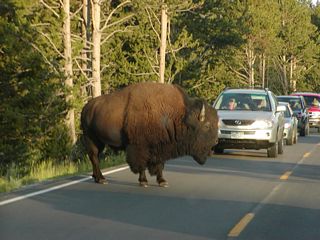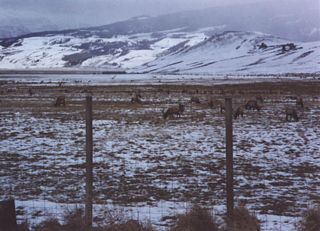U.S. Highway 89
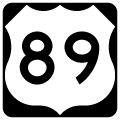
U.S. 89 runs from Interstate 40 in Flagstaff, Arizona, north to the International Boundary just east of Glacier National Park, Montana. Former U.S. 89 south of Flagstaff has been decommissioned. U.S. 89 follows State Control Route 10 for its entire route through western Wyoming.
U.S. 89 Auxiliary Routes
There are none, although there was a U.S. 89T (temporary routing) around 1938 that followed modern U.S. 189 while the routing of U.S. 89 was being finalized (see details in the History section, below).
History
In 1926, U.S. 89 was not commissioned in Wyoming. Between 1926 and 1936, what is now Wyoming 89 was known as Wyoming 65. So between 1926 and 1936, U.S. 89 ended in Utah. That changed with the Great Recommissioning of 1936 -- U.S. 89 became a major route, from the Mexican border at Nogales, Arizona, north to the Canadian border near Glacier National Park, Montana.
In 1936, AASHTO recommended changing what was then known as the U.S. 87W branch between Moran Junction and Great Falls, Montana, into U.S. 89. However, there was some controversy as to how this new section of U.S. 89 would link to the already existing section of U.S. 89 in central Utah. So the highway planners had to determine exactly what route U.S. 89 would follow between central Utah and Moran Junction.
That same year (1936), Wyoming 287 (now U.S. 189) was recommissioned as U.S. 89. U.S. 89 was merged with U.S. 30S through Evanston and Piedmont, then turned north to serve Kemmerer, La Barge, and Big Piney. U.S. 89 merged with U.S. 187 in Daniel Junction, then U.S. 89-187 continued north to Hoback Junction and Jackson. What is now Wyoming 89 became known as Wyoming 91 through the modern route of U.S. 89 Star Valley, perhaps to reflect that road's importance in the state highway grid (91 is the next odd number up the scale from 89).
This designation of U.S. 89 over Wyoming 287 was not to last, however. Three years later, in 1939, U.S. 89 was recommissioned to run through Salt Lake City, Ogden, Logan, Bear Lake, and Montpelier. It would now enter Wyoming through Star Valley. The old U.S. 89 routing became the new U.S. 189. At about the same time, Wyoming 89 was commissioned in place of Wyoming 91; it is likely that this renumbering is due to Wyoming being upset at losing most of U.S. 89 to Utah and Idaho.
This created two highways numbered 89: U.S. 89 through Utah, Idaho, and Wyoming, and Wyo. 89 along the western border of Wyoming. This has resulted in some motorist confusion between the two routes, especially since they more or less converge near Star Valley.
U.S. 89 has kept its current routing since 1939 in Wyoming. A section of U.S. 89 in Arizona, between Nogales and Flagstaff via Tucson, Phoenix, Wickenburg, and Ash Fork, was decommissioned in 1995. AASHTO and Arizona Highway Department officials felt that U.S. 89 was no longer as important for regional travel, because Interstate 17 and U.S. 93 provides the primary route for long-distance travelers. Arizona 89, 89A, 77, and 79 are still important locally, but are no longer linked under the U.S. 89 banner.
Guide
U.S. 89 enters the state of Wyoming at the southern end of Star Valley near Geneva, Idaho. The tiny communities of Afton, Grover, Thayne, and others are silhouetted by the mountains to the east, giving the area a Swiss feel.
Meeting U.S. 26 at Alpine, U.S. 89 follows the Snake River toward Hoback Junction. In the 1960s, the road was moved from one side of the river to the other to allow for expansion. U.S. 26-89 meet U.S. 189-191 at Hoback Junction, and the four routes continue north toward Jackson together.
Located along North Entrance Road within Yellowstone National Park, the 45th Parallel marks the state line between Wyoming and Montana. North Entrance Road leads to the continuation of U.S. 89 in the Treasure State.
07/26/99
Bison and other animals commonly cross the road and stop traffic within Yellowstone National Park.
07/16/05
Elk National Wildlife Refuge north of Jackson near U.S. 26-89-191.
1994
Photo Credits:
- Jim Teresco: 07/26/99
- Casey Cooper: 07/16/05
- Andy Field: 1994
Connect with:
Page Updated Sunday October 30, 2005.
